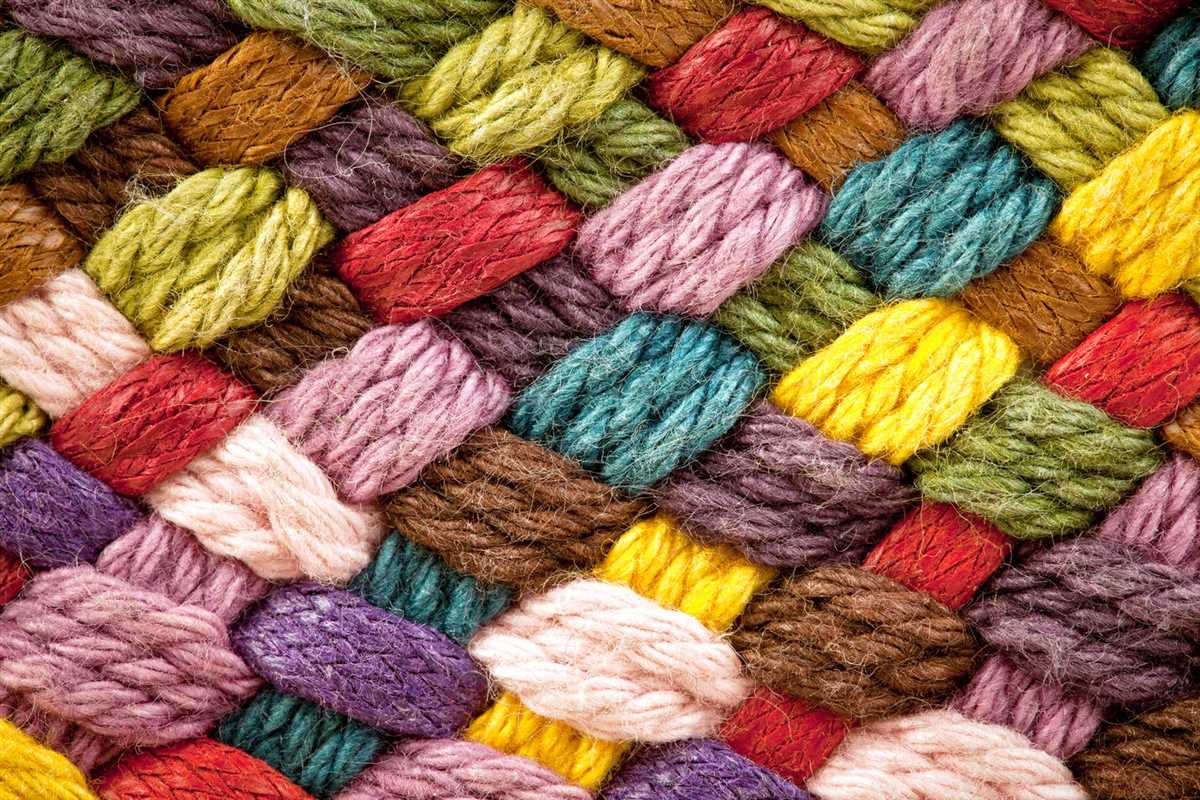
Knitting is a craft that has been practiced for centuries, and it continues to be a popular and enjoyable hobby for many people around the world. One of the most fun and creative aspects of knitting is the ability to create intricate multicolor patterns.
Using multiple colors in your knitting can add depth, interest, and personality to your projects. Whether you’re knitting a cozy blanket, a fashionable scarf, or a cute hat, incorporating different hues can transform a simple design into a work of art.
There are several techniques and methods for creating multicolor patterns in knitting. Some knitters prefer to use stranded colorwork, also known as Fair Isle, where two or more colors are worked in a single row. This technique requires carrying the unused colors along the back of the work, creating a neat and seamless appearance.
Other knitters may prefer intarsia, which involves knitting blocks of color separately and using bobbins or small lengths of yarn to join them together. This technique is ideal for creating larger blocks of color or intricate geometric designs.
Whether you’re a beginner or an experienced knitter, experimenting with multicolor patterns can be a fun and rewarding challenge. With a little patience and practice, you’ll be able to create beautiful and unique designs that are sure to impress!
The Art of Knitting with Multiple Colors
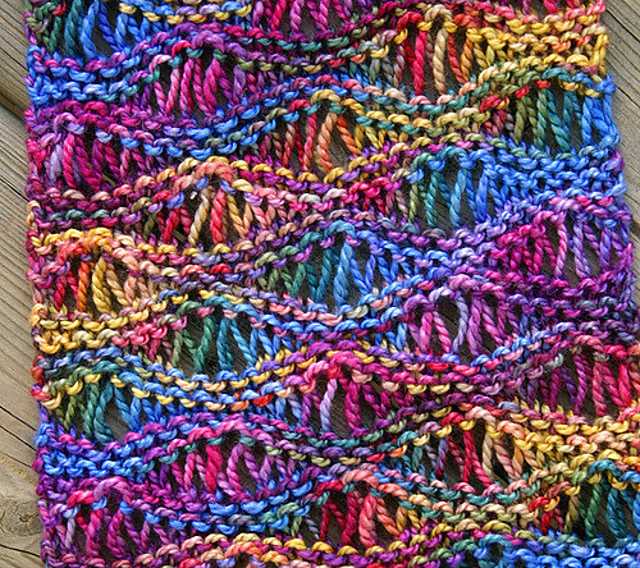
Knitting with multiple colors is a classic technique that allows knitters to create intricate and detailed patterns. Whether you’re a beginner or an experienced knitter, working with multiple colors can add depth, texture, and visual interest to your projects.
Choosing the Right Colors
When it comes to selecting colors for a multicolor knitting project, the possibilities are endless. It’s important to consider the desired outcome and the overall aesthetic you want to achieve. You can choose complementary colors for a harmonious blend, contrasting colors for a bold and vibrant look, or even experiment with different shades of the same color for a subtle and sophisticated effect.
Tip: It can be helpful to sketch out your design or create a mood board with swatches of yarn to visualize how the colors will work together before starting your project.
Managing Yarns and Tangles
Working with multiple colors often means managing multiple balls or skeins of yarn, which can easily become tangled. To prevent this, consider using yarn bobbins or small leftover bits of yarn to keep your colors organized. When changing colors, take care to weave in the ends securely to avoid loose threads in your finished project.
If you’re using more than two colors in your project, you might want to consider using a colorwork chart or pattern to help you keep track of which colors to use and when. This can make your knitting experience more enjoyable and help you avoid mistakes.
Techniques for Multicolor Knitting
There are several techniques you can use for knitting with multiple colors, depending on the desired effect and complexity of the pattern. In stranded colorwork, also known as Fair Isle knitting, you carry both colors across the back of your work, creating a float of unused yarn on the wrong side. This technique is great for creating intricate motifs and designs.
In intarsia knitting, you use separate balls of yarn for each color block or section of the pattern. This technique is ideal for large, geometric designs, as it allows you to create clean color transitions without carrying yarn across the back of your work.
Tip: Experiment with different techniques to find what works best for your project and personal knitting style. Practice and patience are key when it comes to mastering multicolor knitting.
In conclusion, knitting with multiple colors opens up a world of creative possibilities. From simple stripes to complex colorwork designs, this technique allows you to express your individuality and create beautiful, one-of-a-kind pieces. So grab your needles, choose your colors, and immerse yourself in the art of knitting with multiple colors!
Choosing Yarn for Multicolor Patterns
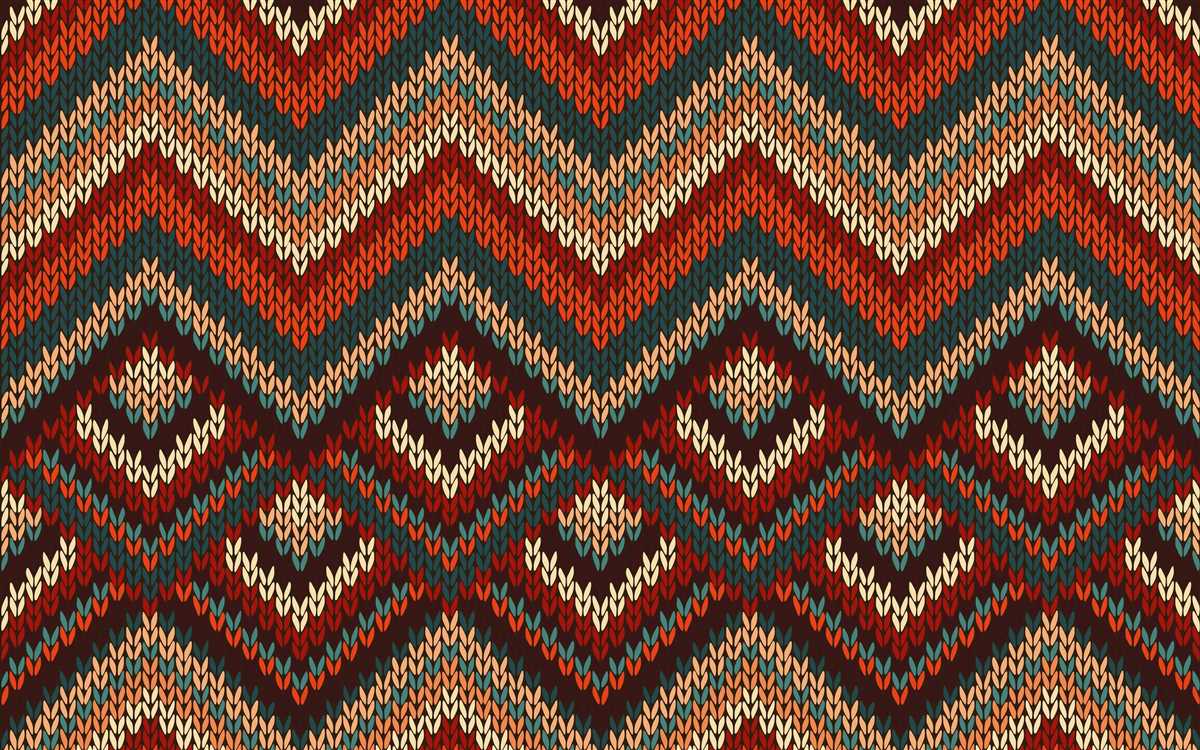
When it comes to knitting multicolor patterns, the choice of yarn plays a crucial role in achieving the desired result. It not only affects the overall appearance of the project but also influences the ease of knitting and the final durability of the finished piece. Here are some important factors to consider when selecting yarn for multicolor patterns:
Fiber Content
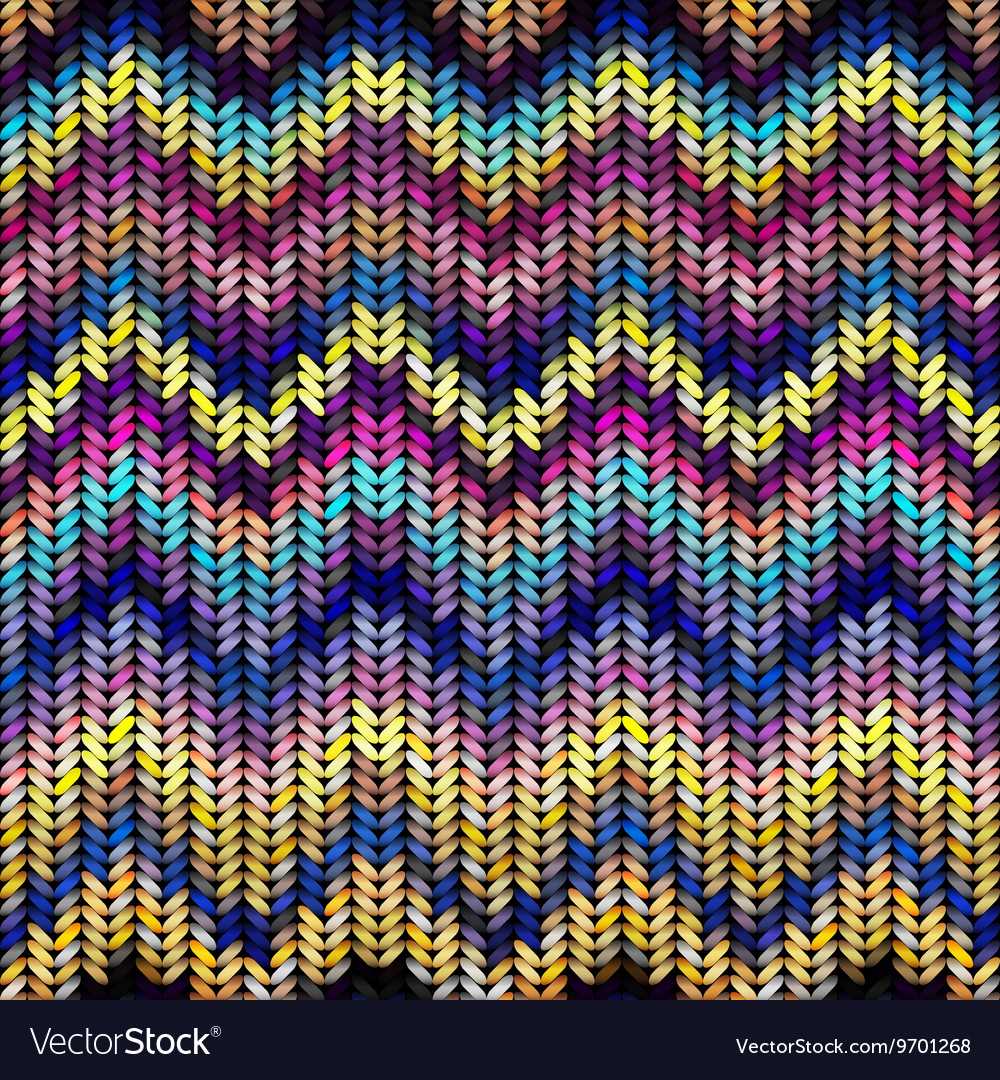
The fiber content of the yarn determines its characteristics, such as its texture, drape, and warmth. Different fibers will react differently to color dyes, which can affect the vibrancy and colorfastness of the multicolor pattern. Such considerations are especially important when using contrasting colors or when working with intricate colorwork patterns. Wool and wool blends are popular choices due to their excellent color absorption and resilience.
Weight and Gauge
For multicolor patterns, it is essential to select yarn that is the appropriate weight and gauge for the project. This ensures that the colors properly blend and the pattern details are clearly visible. The weight of the yarn will also determine the drape and overall appearance of the finished piece. It is important to choose a yarn that matches the recommended gauge of the pattern to ensure the desired size and fit.
Color Variations and Contrast
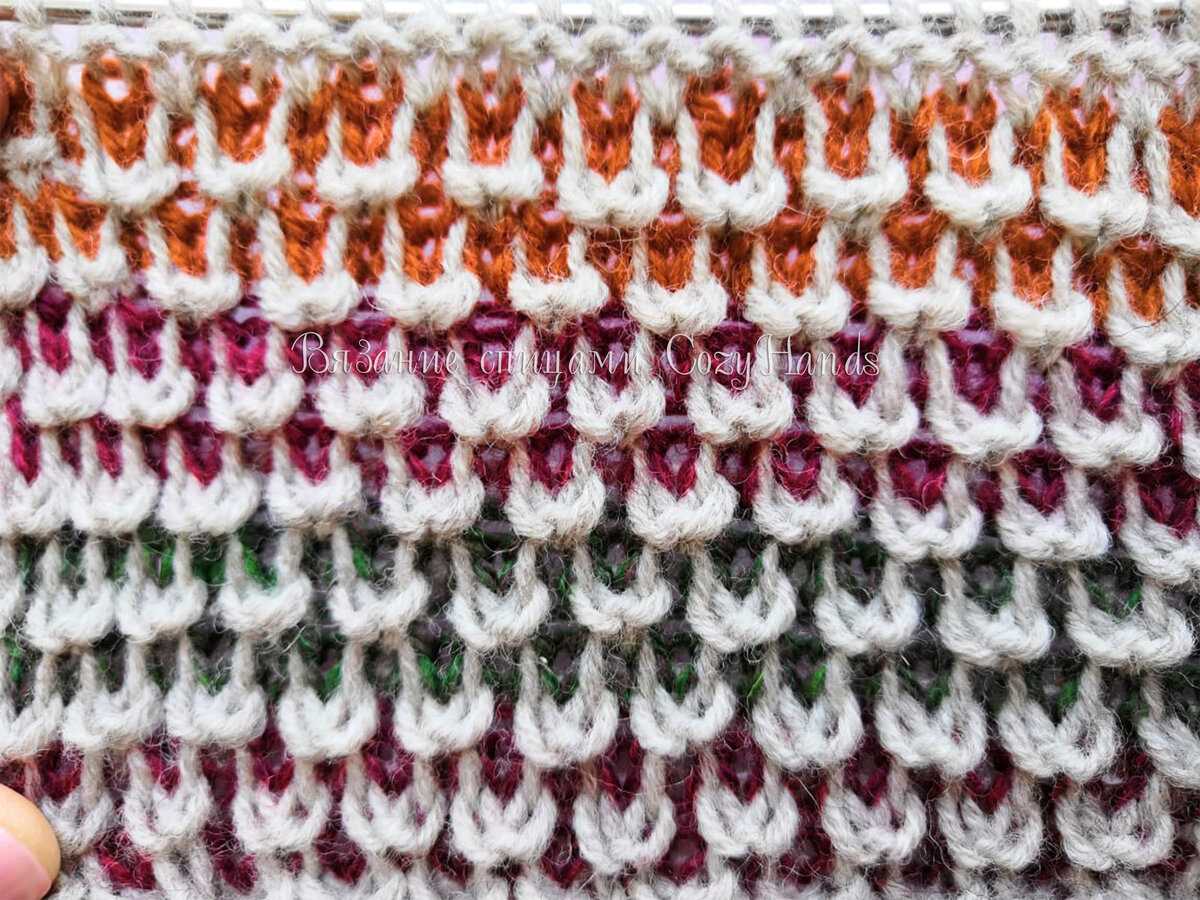
The selection of colors for multicolor patterns should take into account the desired effect and the level of contrast between the colors. Some patterns may call for subtle color variations, while others may require high contrast to enhance the design. When choosing yarn, it is helpful to consider how the colors will interact with each other and how they will appear in the final project. Swatching with different color combinations can be a useful technique to determine the desired color contrast and effect.
Yarn Quality and Durability
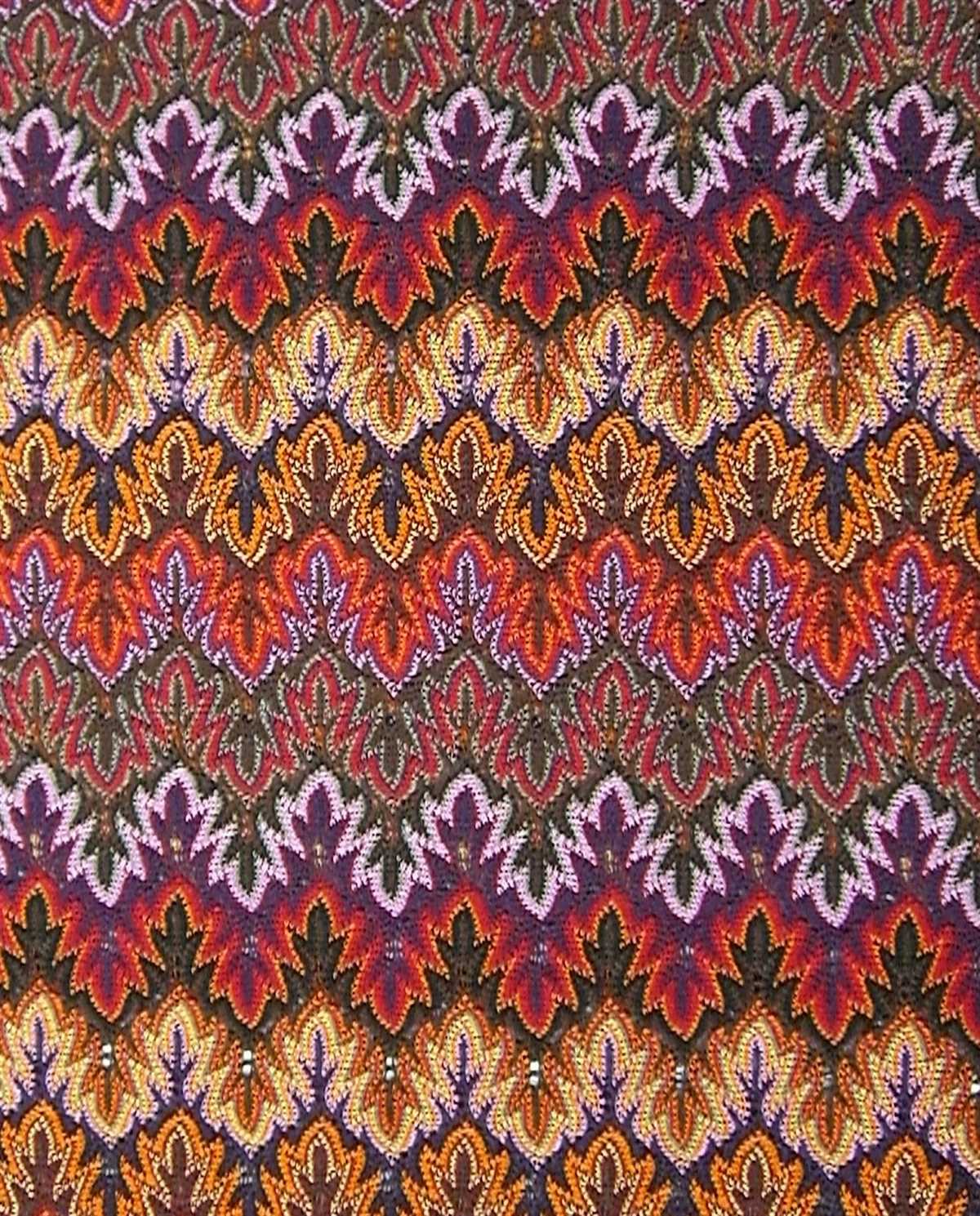
In multicolor knitting projects, durability is an important factor to consider, especially if the finished piece will be subjected to frequent washing or heavy use. The quality of the yarn, including its ply and twist, can greatly affect its strength and longevity. It is advisable to choose yarn that is known for its durability and stitch definition to ensure the multicolor pattern remains intact and vibrant over time.
In conclusion, selecting the right yarn for multicolor patterns involves considering the fiber content, weight and gauge, color variations and contrast, as well as yarn quality and durability. By making thoughtful choices in these areas, knitters can create stunning multicolor projects that are both visually appealing and long-lasting.
Essential Tools for Multicolor Knitting
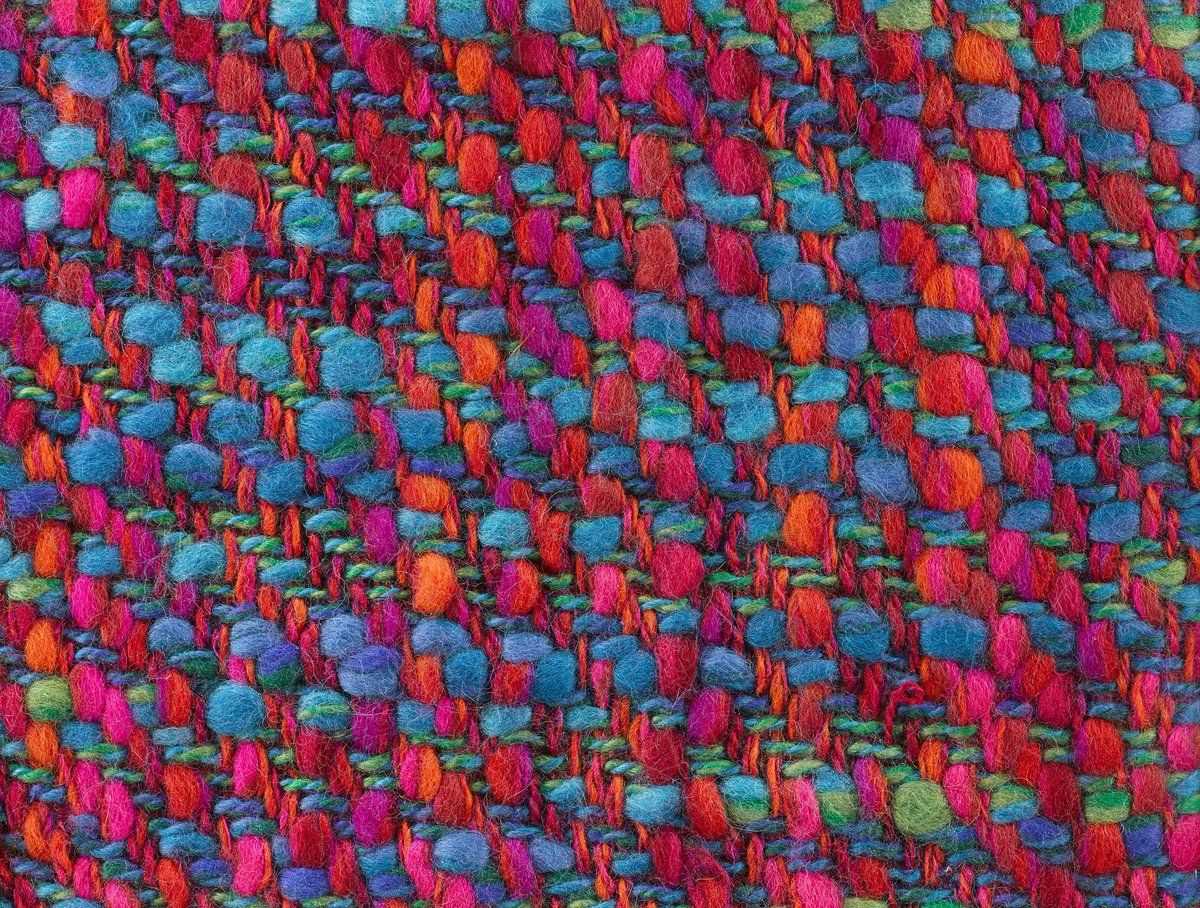
Knitting Needles: The first essential tool for multicolor knitting is a set of knitting needles. Opt for a set with multiple sizes so you can adjust your tension and gauge easily. Circular needles are particularly useful for knitting projects with a large number of stitches and for knitting in the round.
Tapestry Needles: Tapestry needles are necessary for weaving in loose ends and sewing pieces together. Choose a set with different sizes to accommodate different yarn weights and needle sizes.
Stitch Markers: Stitch markers are crucial for keeping track of pattern repeats and shaping. They help you identify key points in your knitting, such as the beginning of a round or a specific stitch. Choose markers that are easy to slip onto your needles and won’t snag your yarn.
Yarn Bobbins: Yarn bobbins are handy for keeping your different colored yarns organized and tangle-free. They allow you to easily switch between colors without having to untangle or unwind yarn from multiple skeins.
Color Chart: A color chart is essential for multicolor knitting projects, particularly for complex designs. It helps you keep track of color changes and ensures you are following the pattern correctly. You can create your own color chart using graph paper or find printable charts online.
Scissors: A pair of sharp scissors is necessary for cutting yarn and snipping any loose ends. Choose a pair of scissors that are small and sharp enough to easily cut through yarn without fraying or damaging the fibers.
Row Counter: A row counter is useful for keeping track of your rows, especially for larger projects where it’s easy to lose count. You can use a physical row counter or a digital one, depending on your preference.
Accessories: Other useful accessories for multicolor knitting include a yarn gauge tool for measuring your yarn thickness, a tape measure for checking your gauge and sizing, and a needle gauge for determining your needle size.
With these essential tools in your knitting kit, you’ll be well-equipped to tackle any multicolor knitting project with ease and confidence.
Getting Started: Basic Techniques of Multicolor Knitting
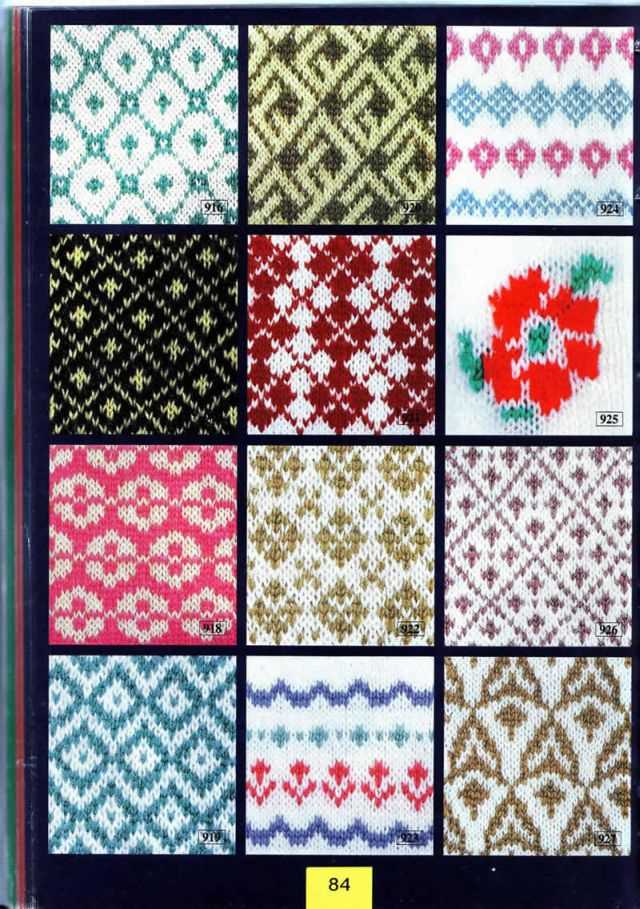
When it comes to creating beautiful multicolor patterns in knitting, it’s important to have a solid understanding of the basic techniques involved. By mastering these techniques, you’ll be able to create stunning designs that showcase your creativity and skill.
Choosing the Right Yarn: The first step in multicolor knitting is selecting the right yarn for your project. Opt for yarns that have excellent stitch definition and are well-suited for colorwork. Wool and wool blends are popular choices because they are warm, resilient, and provide great stitch definition.
Chart Reading: Multicolor knitting patterns often involve charts that represent each color of the design. Learning to read and understand these charts is essential for successfully following a pattern. It’s important to pay attention to the symbols and color changes indicated in the chart to ensure accurate execution of the design.
Stranding: One technique commonly used in multicolor knitting is stranding, also known as fair isle or stranded knitting. This technique involves carrying the unused color along the back of the work while knitting with the main color. Stranding allows for smooth color transitions and creates a double-layered fabric, making it a popular choice for projects such as sweaters or blankets.
Weaving in Ends: With multiple colors involved, it’s important to know how to neatly weave in the ends of each color change. This ensures a clean and professional finish to your project. There are various methods for weaving in ends, such as duplicate stitch or carrying the ends along the edge, and it’s worth experimenting to find the technique that works best for you.
Tension Control: Maintaining consistent tension is crucial in multicolor knitting to ensure that the fabric stays even and the design is well-defined. Practice knitting with two different colors to get a feel for the tension required and make adjustments as necessary. Pay attention to your stitches and the way the yarn carries across the back of the work to achieve an even fabric.
Practice and Patience: Like any new skill, multicolor knitting requires practice and patience. Start with simpler designs and gradually work your way up to more complex patterns. Don’t be discouraged if your first attempts aren’t perfect – embrace the learning process and enjoy the journey as you develop your multicolor knitting skills.
Creating Multicolor Stripes in Your Knitting Projects
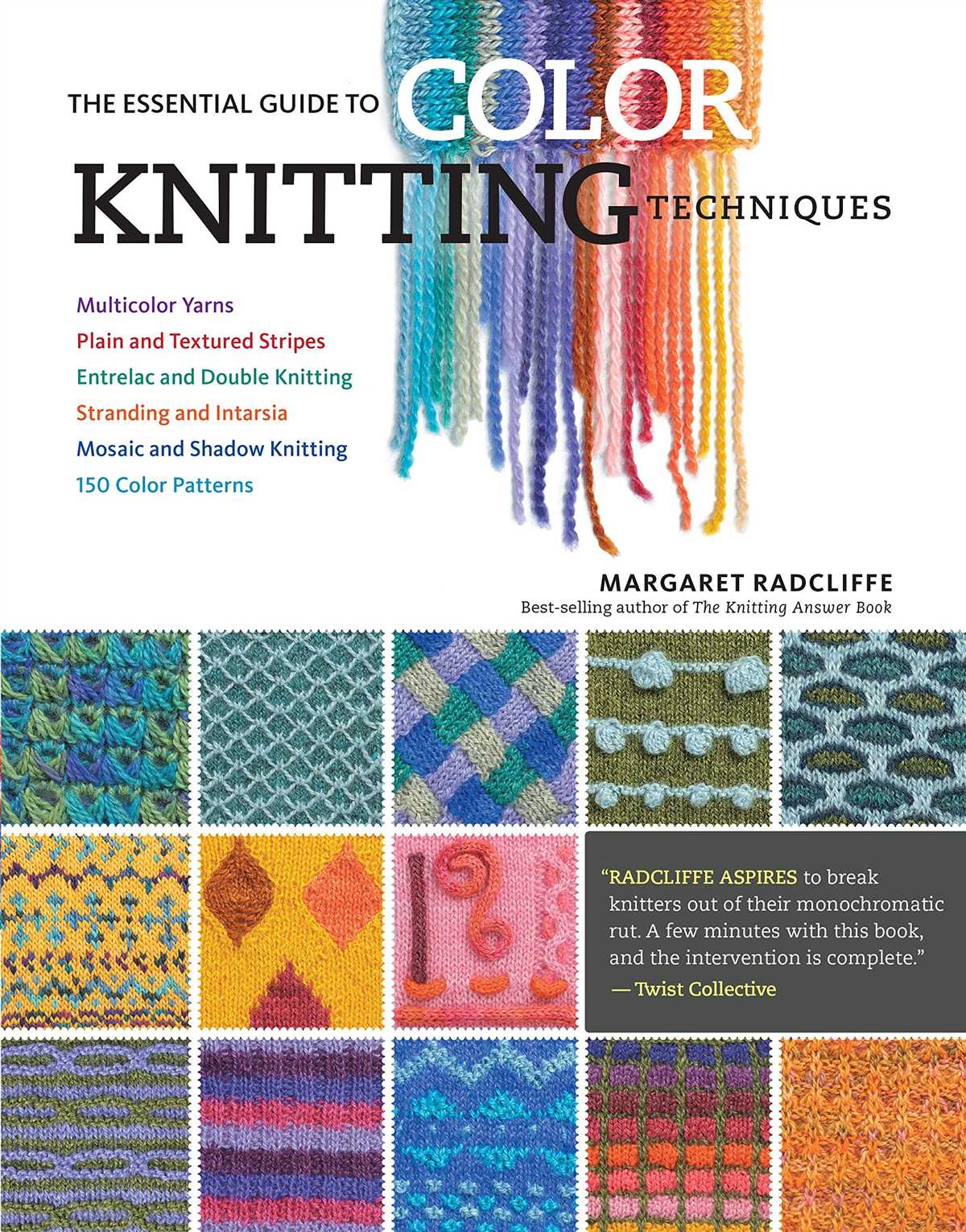
Adding multicolor stripes to your knitting projects is a great way to add visual interest and make your creations stand out. Whether you’re knitting a scarf, a sweater, or a hat, incorporating different colors can enhance the design and make it more unique.
There are several techniques you can use to create multicolor stripes in your knitting. One method is to simply switch colors at the beginning of each row or round. This creates clean, defined stripes that can be as wide or narrow as you desire. You can create a pattern by repeating the same sequence of colors, or you can experiment with different combinations to create an original design.
Intarsia Technique
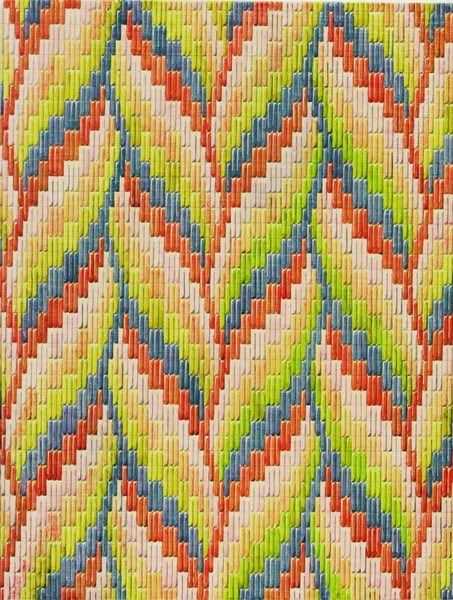
The intarsia technique is another way to create multicolor stripes in your knitting. This method involves using separate balls or bobbins of yarn for each color section. When you reach the end of a color section, you drop the yarn and pick up the new color from where it was left off. This technique is commonly used for large color blocks or intricate designs, as it allows for more precise color placement.
When using the intarsia technique, it’s important to twist the yarns at the color change to prevent holes or gaps in your knitting. You can do this by bringing the new color under the old color before starting the stitch. This helps to anchor the yarn and create a seamless transition between colors.
Stranded Knitting
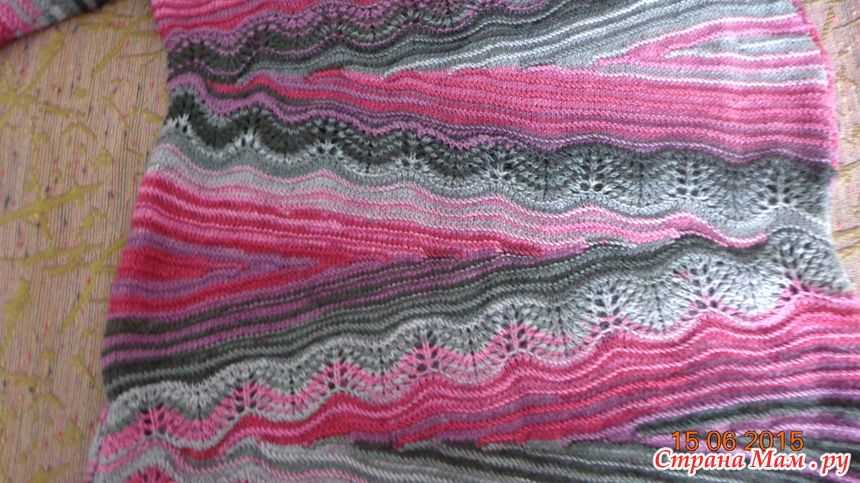
Stranded knitting, also known as Fair Isle knitting, is a technique that involves carrying two or more colors of yarn across the back of your work. This creates a woven effect and produces multicolor stripes. Unlike intarsia, stranded knitting allows for more fluid color changes and can create intricate patterns.
When doing stranded knitting, it’s important to keep your tension even to avoid puckering or pulling. You may need to adjust your tension as you switch between colors to ensure an even fabric. Additionally, be mindful of the length of yarn floats at the back of your work, as long floats can get caught on objects or snag.
Whether you choose to use the intarsia technique or stranded knitting, experimenting with multicolor stripes in your knitting projects can add a whole new dimension to your creations. Have fun playing with different color combinations and patterns to create unique and eye-catching designs.
Introducing Fair Isle Knitting: Patterns and Tips
Fair Isle knitting is a traditional knitting technique that originated in the Fair Isle, a small island in Scotland. It is characterized by the use of multiple colors in a single row or round of knitting, creating intricate and colorful patterns. If you are looking to add some beautiful and vibrant designs to your knitting projects, Fair Isle knitting is the perfect technique to explore.
When starting with Fair Isle knitting, it is important to choose the right yarns and colors. Traditionally, Fair Isle knitting uses Shetland wool, as it is known for its warmth and ability to hold color. You can also choose other types of wool or acrylic yarns that are suitable for colorwork. It is recommended to select colors that have a good contrast, as this will help the patterns to stand out. Once you have chosen your yarns and colors, you can start experimenting with different patterns and designs.
Patterns
Fair Isle knitting offers endless possibilities for creating stunning patterns. Some popular Fair Isle patterns include stripes, chevrons, diamonds, and motifs inspired by nature or traditional Scottish designs. To create these patterns, you need to work with two or more colors in the same row or round. You can either carry the yarns across the back of the work or use a technique called “stranding” where you knit with two colors at the same time, picking up the appropriate color for each stitch. Fair Isle patterns can be used on various knitting projects such as sweaters, hats, scarves, and mittens.
Tips for Fair Isle knitting:
- Tension: One of the key aspects of Fair Isle knitting is maintaining an even tension. It is important to ensure that your stitches are not too tight or too loose, as this can affect the overall appearance of the pattern. Practice knitting with two yarns at the same time and experiment with different tension techniques until you find a comfortable rhythm.
- Floats: When working with multiple colors in a row, you will have floats, which are strands of yarn that are carried across the back of the work. It is important not to have floats that are too tight or too loose. To avoid long floats, you can catch the unused yarns every few stitches or use a technique called “twisting” where you catch the float with the working yarn to secure it.
- Practice small projects: If you are new to Fair Isle knitting, it is recommended to start with smaller projects such as hats or mittens. This will allow you to practice the technique on a smaller scale and understand how the colors and patterns work together. Once you feel more confident, you can move on to larger projects.
With its rich history and beautiful designs, Fair Isle knitting is a wonderful technique to explore. Whether you are a beginner or an experienced knitter, incorporating Fair Isle patterns into your projects can add a touch of elegance and sophistication.
Mastering Intarsia Knitting: Designing with Multiple Colors
Intarsia knitting is a technique that allows you to create intricate, multicolor designs in your knitting. By working with multiple colors in different sections of your project, you can create beautiful and detailed patterns. This technique is commonly used in creating pictures, images, and geometric designs in knitting.
To successfully master intarsia knitting, it is important to understand the basics of colorwork knitting and how to manage multiple yarns. A key aspect of intarsia knitting is that each color section is worked with its own separate ball of yarn. This means that you need to be comfortable with joining and weaving in ends as you switch between colors.
Designing with multiple colors in intarsia knitting
When designing a pattern using the intarsia technique, it is important to plan your colors and chart out your design beforehand. This will help you visualize how your colors will interact and allow you to make any necessary adjustments before starting your project.
One common method for designing with multiple colors in intarsia knitting is to create a color chart or grid. This will help you keep track of where each color should be placed and make it easier to follow your design as you knit. You can use colored pencils or markers to fill in the sections of the grid with your chosen colors.
Tips for successful intarsia knitting
Here are a few tips to keep in mind when working with multiple colors in intarsia knitting:
- Use bobbins or separate balls of yarn for each color section to keep your yarn organized and prevent tangling.
- Twist your yarns together at the back of your work as you switch colors to prevent holes or gaps.
- Weave in your ends as you go to minimize the amount of finishing work at the end of your project.
- Practice proper tension control to ensure that your color sections lie flat and evenly in your knitting.
- Experiment with different color combinations and techniques to create unique and eye-catching designs.
By mastering intarsia knitting and designing with multiple colors, you can expand your knitting skills and create impressive and personalized projects. With practice and attention to detail, you can become confident in creating intricate and beautiful multicolor patterns in your knitting.
Exploring Different Multicolor Stitch Patterns
When it comes to knitting multicolor patterns, there is a wide range of stitch patterns that you can explore to create unique and eye-catching designs. These stitch patterns allow you to incorporate multiple colors into your knitting projects, adding depth and complexity to your finished pieces. Whether you’re a beginner or an experienced knitter, experimenting with different multicolor stitch patterns can be a fun and creative way to enhance your knitting skills.
One popular multicolor stitch pattern is the Fair Isle technique. Fair Isle knitting originates from a technique developed in Fair Isle, a small island in Scotland. This technique involves knitting with two or more colors in each row, creating intricate patterns and motifs. The key to achieving a successful Fair Isle pattern is maintaining an even tension and ensuring that the floats of yarn behind the work are not too loose or too tight. With practice, you can create beautiful Fair Isle projects, such as hats, sweaters, and mittens.
Here are a few other multicolor stitch patterns that you can explore:
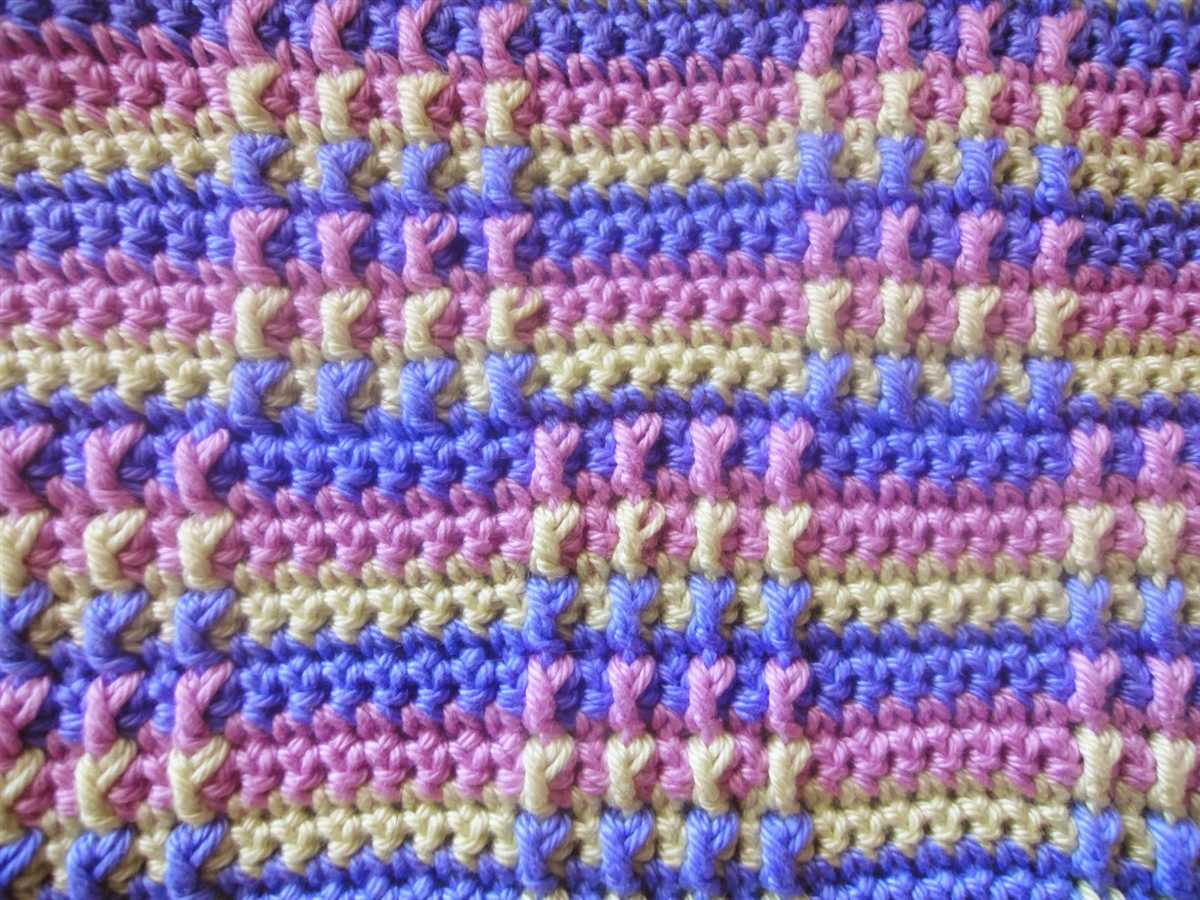
- Intarsia: Intarsia knitting involves working blocks of color using separate balls or bobbins of yarn. This technique allows for larger, more distinct color areas and is often used to create bold geometric designs. It’s important to remember to twist the yarn when changing colors to prevent holes or gaps in your work.
- Slipped Stitch: Slipped stitch patterns create a textured effect by slipping stitches instead of knitting them. This can be done with just one or multiple colors to create various patterns, such as stripes or diagonals. Slipped stitch patterns are great for adding visual interest without too much complexity.
- Gradient: Gradient stitch patterns involve using different shades of the same color to create a gradual transition from one hue to another. This technique is often used to create ombre effects or to blend multiple colors smoothly together. It’s a great way to add depth and dimension to your knitting.
Overall, exploring different multicolor stitch patterns opens up a world of possibilities in your knitting projects. Whether you prefer intricate Fair Isle patterns or bold geometric designs, there is a multicolor stitch pattern out there that will suit your style and skill level. So grab your knitting needles, some colorful yarn, and start experimenting with these exciting techniques!
Finishing Touches: Blocking and Finishing Your Multicolor Projects
Once you have completed the knitting portion of your multicolor project, there are a few important finishing touches to consider. Blocking and finishing can elevate the overall look and feel of your project, ensuring that it looks polished and professional.
Blocking: Blocking is a crucial step, especially for multicolor projects. It involves wetting or steaming the finished knitting to even out the stitches and relax the fabric. This helps to shape the project and make the colors and patterns pop. Before blocking, make sure to read the yarn label to determine the appropriate blocking method for the type of yarn you used. Some yarns may require gentle hand washing, while others can be steamed. Lay your project out on a blocking mat or towel, gently stretching and shaping it to the desired dimensions. Allow it to dry completely before moving on to the finishing stage.
Finishing: The finishing touches of a multicolor project can really make it shine. Start by weaving in any loose ends from your color changes, making sure to secure them well. This will give your project a clean and professional appearance. Consider adding buttons, zippers, or other closures if necessary. These details can add functionality and style to your finished piece. If your project requires seaming, take the time to carefully stitch the pieces together, paying attention to matching up the colors and patterns. Once all the finishing touches are complete, give your project a final inspection and make any necessary adjustments.
Remember, blocking and finishing are important steps in the knitting process that should not be skipped. They can transform your multicolor project from looking homemade to looking high-end. So take your time, pay attention to the details, and enjoy the satisfaction of completing a beautiful and well-finished knitting project.
Going Beyond: Advanced Multicolor Knitting Techniques
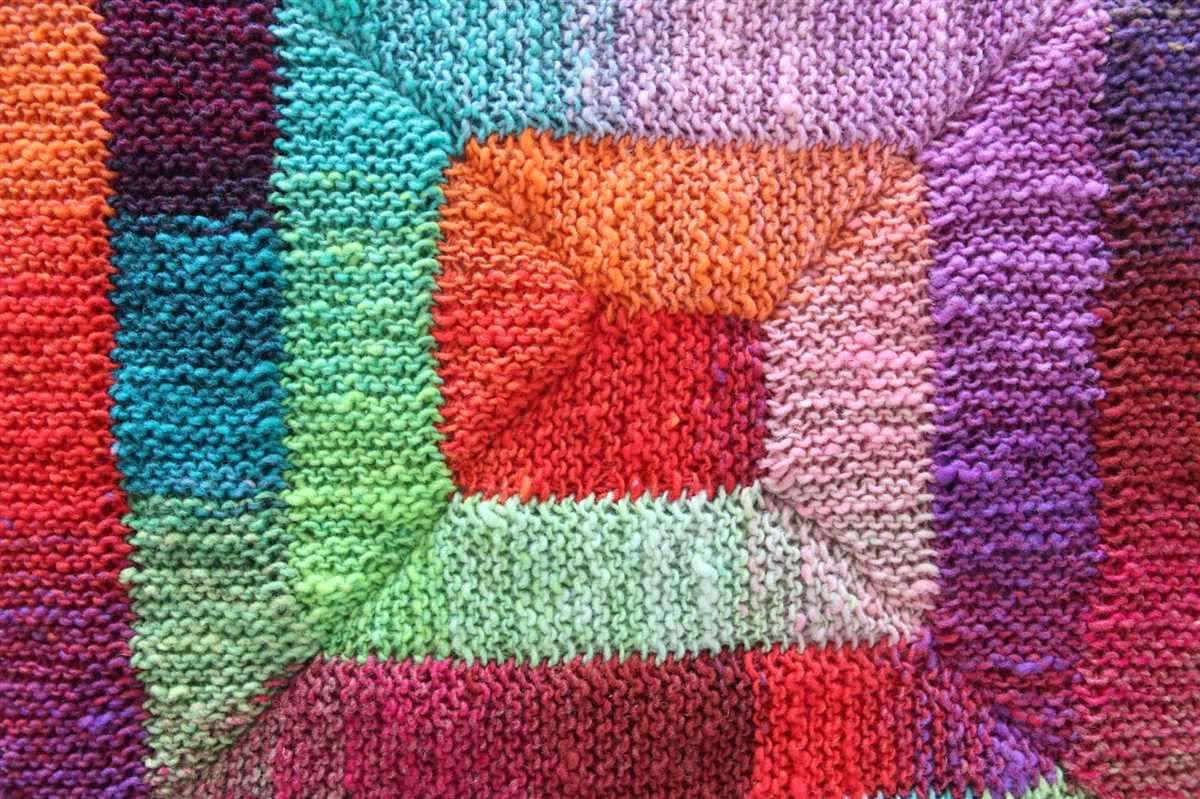
Knitting with multiple colors opens up a world of possibilities for creativity and design. Once you have mastered the basics of multicolor knitting, you can take your skills to the next level with advanced techniques. Here are some ways to go beyond the basics and create intricate multicolor patterns.
Fair Isle Knitting: Also known as stranded knitting, Fair Isle technique involves working with two or more colors in a single row. This technique creates intricate geometric patterns, motifs, and landscapes. By carrying the unused yarn loosely across the back of the work, you can create beautiful and colorful designs.
Intarsia Knitting: Intarsia technique allows you to knit blocks of color without carrying the unused yarn across the back of the work. Instead, you use separate bobbins or butterflies of yarn for each color block. This technique is perfect for creating large, bold designs or pictures within your knitting.
Slip Stitch Knitting: Slip stitch technique involves slipping stitches from one needle to another without working them. By slipping stitches, you can create interesting color patterns, textures, and even faux cables. This technique is great for adding visual complexity to your knitting while still working with only one color per row.
Mosaic Knitting: Mosaic knitting combines slipped stitches and two colors to create intricate patterns. You knit with only one color at a time, and the slipped stitches from the previous row reveal the contrasting color. This technique creates stunning designs and is perfect for adding depth and dimension to your multicolor knitting.
Double Knitting: Double knitting is a technique that creates a reversible fabric with two different color patterns on each side. By knitting with two yarns, one for the front and one for the back, you can create beautiful and complex reversible patterns. This technique is advanced and requires concentration and practice, but the results are truly stunning.
In conclusion, multicolor knitting offers endless possibilities for creating unique and eye-catching designs. By exploring and mastering advanced techniques such as Fair Isle, intarsia, slip stitch, mosaic, and double knitting, you can take your multicolor knitting to new heights. So grab your needles, explore these techniques, and let your creativity soar!